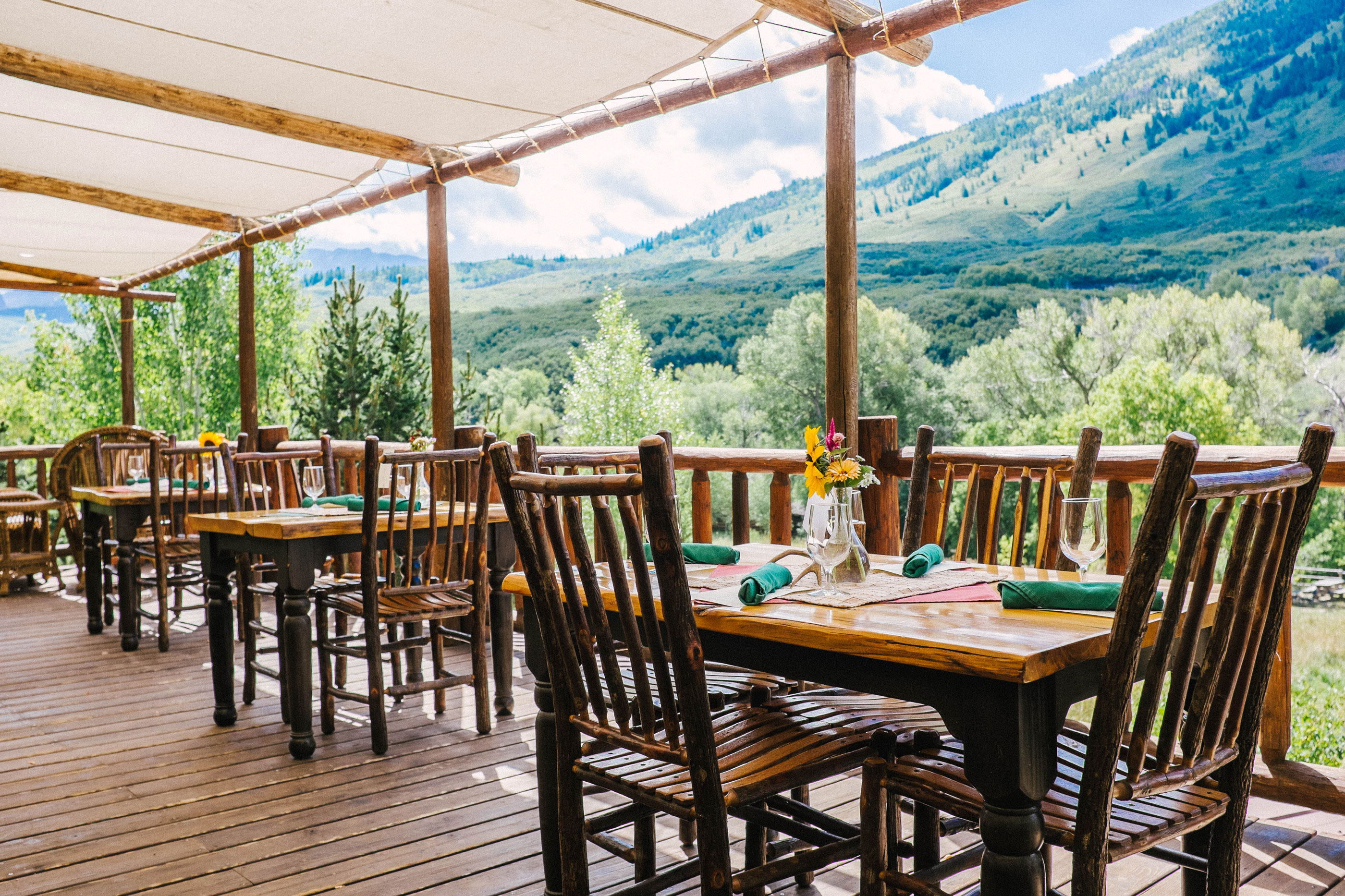
Colorado’s culinary wilderness getaway and its executive chef, Marcus Parrott, put the surrounding natural wonders on your plate — and in your hands.
When we speak of the American West, we speak of history, tradition, and the land — cattle trails, wilderness vistas, ranches, and the fruits of the terrain.
The whole kit and caboodle can be found at Smith Fork Ranch, a Western gourmand’s retreat. Near western Colorado’s North Fork Valley, the 15-year-old ranch showcases the American West as a bountiful gourmet table under the direction of executive chef Marcus Parrott. Now in his sixth year there, Parrott builds on tradition and history stretching back to the Ute Indians’ use of abundant wildlife and the 19th-century cattlemen’s development of the area’s fertile land. The Smith Fork is a diner’s delight, set against a backdrop of rustic luxury. Accommodations range from intimate (two-person spruce cabins) to ample (10-guest mountain houses), all well-appointed with American antiques and original works from regional and Native artists and artisans. Fly-fishing and hiking allow for ample one-on-one time with Mother Nature. (And there’s a lot of her to enjoy: 1.7 million acres of the Gunnison National Forest and West Elk Wilderness areas are accessible from the ranch.) But the obvious emphasis at Smith Fork Ranch is on the gastronomic West, from sit-down meals to food-themed horseback rides that incorporate a hearty breakfast or a cookout with cocktails.
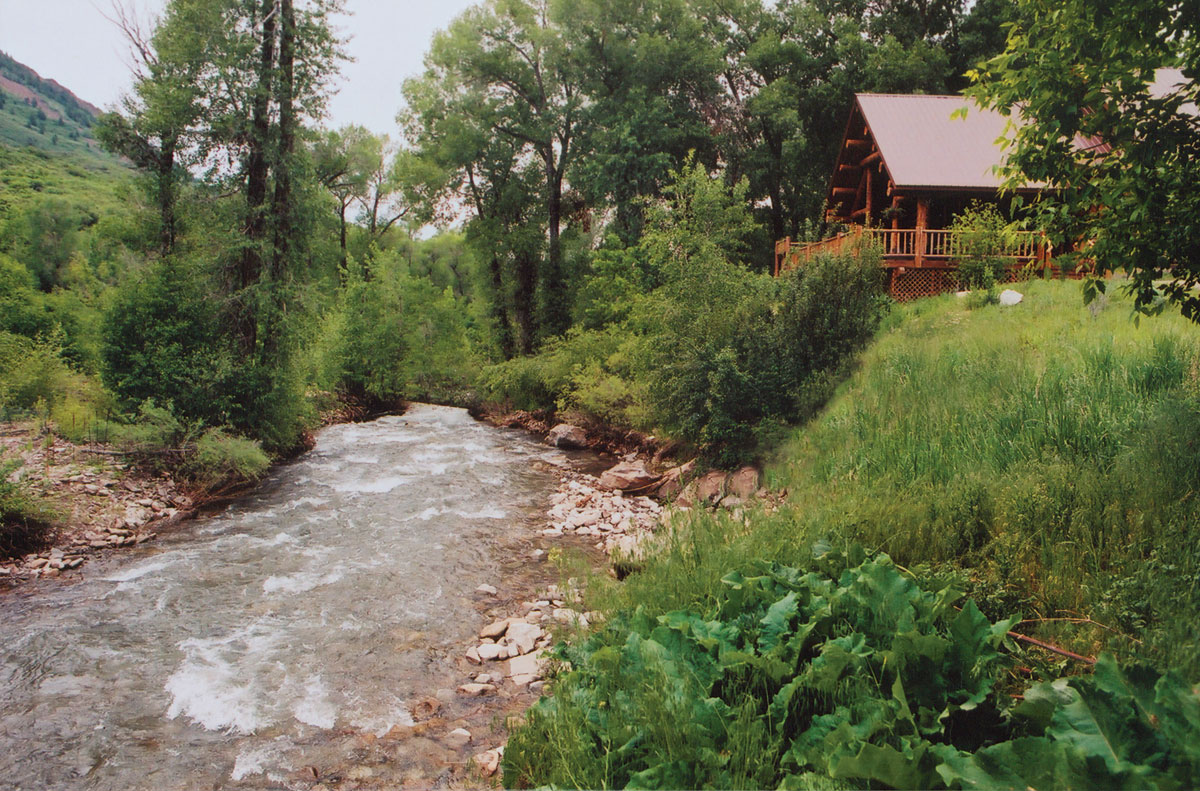
Perhaps you’re more of a hands-on type: Parrott or another Smith Fork chef will happily lead you on an outing to forage for mushrooms, berries, chokecherries, nettles, or whatever the season has in store. There is also the option of digging into the ranch’s garden. “At any given time we have a wide variety of vegetables growing,” Parrot says, “though at 7,200 feet we’ve had to focus on those that grow best here — but that’s why we work with so many other great purveyors.” Whatever can’t be grown and harvested from the property is sourced from a local farming community that has long attracted folks to the Smith Fork Ranch region.
Parrott singles out operations such as Farm Runners, which delivers produce and protein (among other things) from the valley to communities like Carbondale, Aspen, and Crested Butte.
“There is a difference in quality and freshness,” Parrott says. “When I can make a salad out of ingredients just gathered from our garden, or order the biggest, juiciest blackberries I’ve ever seen from this valley, or get lamb from the next town over, it creates a connection to that place as well as providing the highest caliber of quality.”
Chef Parrott took time in advance of Smith Fork Ranch’s season opening in May to talk about why the cooking there is about much more than foodie trends or gimmickry.
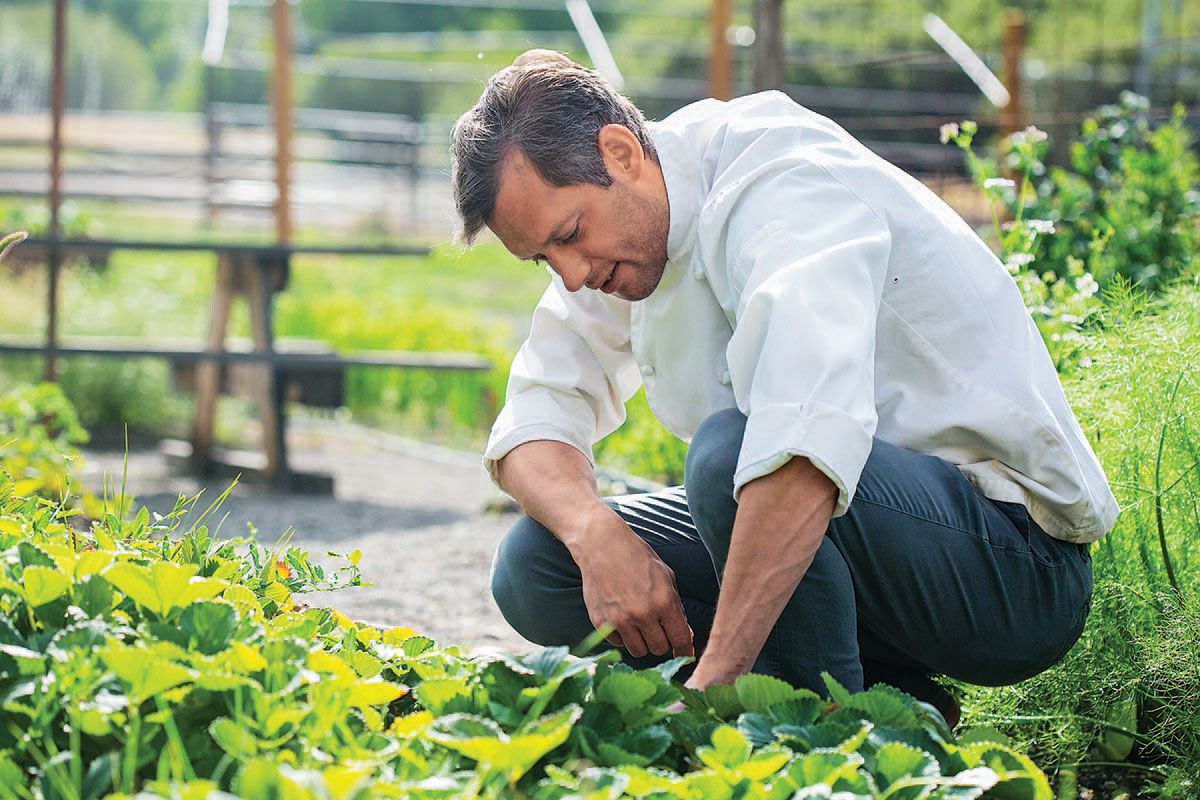
Cowboys & Indians: What’s so attractive about sourcing foods locally and seasonally?
Marcus Parrott: Sourcing locally and seasonally eventually just made sense. Sustainable, organic: These are more than just buzzwords. They have an impact on our communities and the world at large. ...
That being said, this is the 21st century, and I love seafood. When I can order mussels or salmon from the Pacific Northwest or red snapper from Florida on one day and have it delivered the next, that’s a beautiful thing. And I can’t source citrus around here, but I don’t want to be without lemons and limes and oranges.
C&I: Menus change daily at Smith Fork Ranch. How do you switch up how you use one ingredient in a given week?
Parrott: Utilizing certain ingredients multiple times throughout a guest’s stay happens regularly. Feeding people three meals a day for six days means we can’t avoid it. But why would I? When something is at its peak, I want to relish in it. So one day we might have blackberry gazpacho, another, blackberry sorbet. And they would almost always be on a fruit tray for breakfast. Or perhaps morels with an omelet for breakfast, and then in a mushroom ragout for dinner. Mint is the quintessential spring herb for me, so I use it just about anywhere.
This spring I’m using favas and peas, asparagus, berries just coming in, apricots and cherries and rhubarb, morels, radishes, baby turnips, beets, and carrots. And then there are all the greens popping up: arugula, kale, chard, mustard greens, sorrel, watercress, and mesclun mix.
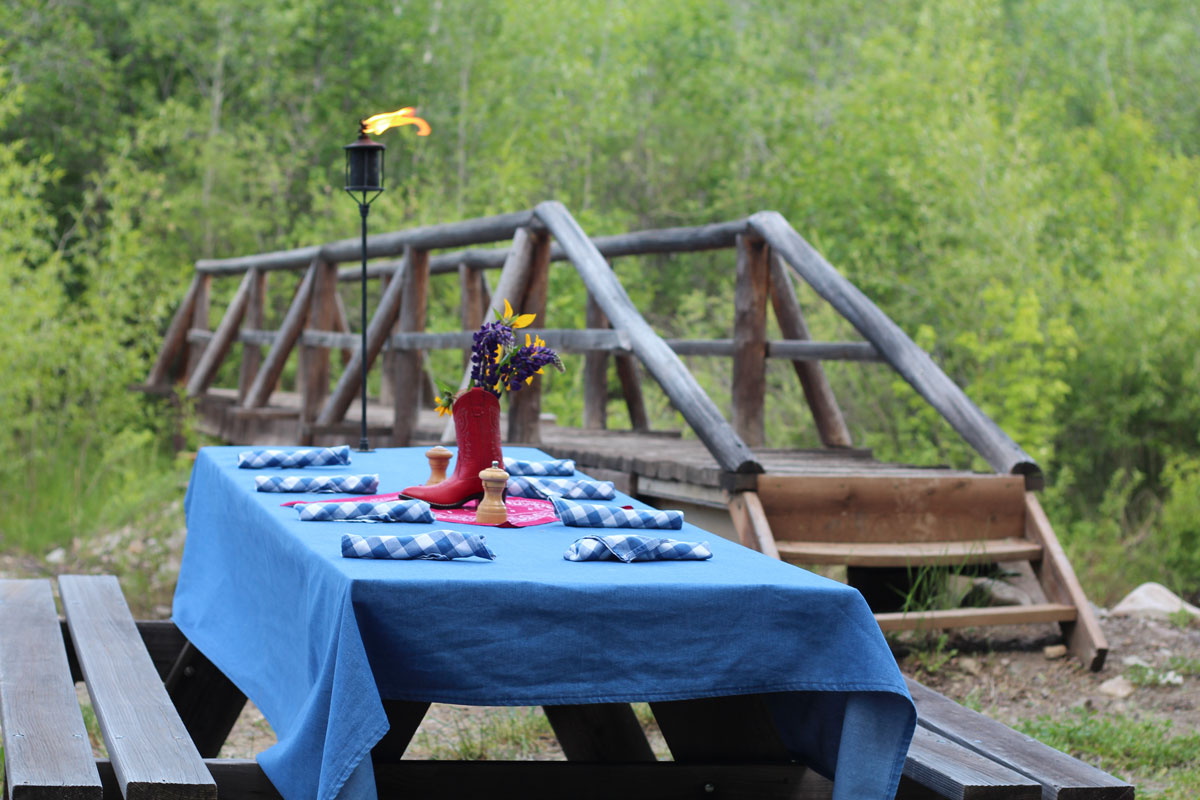
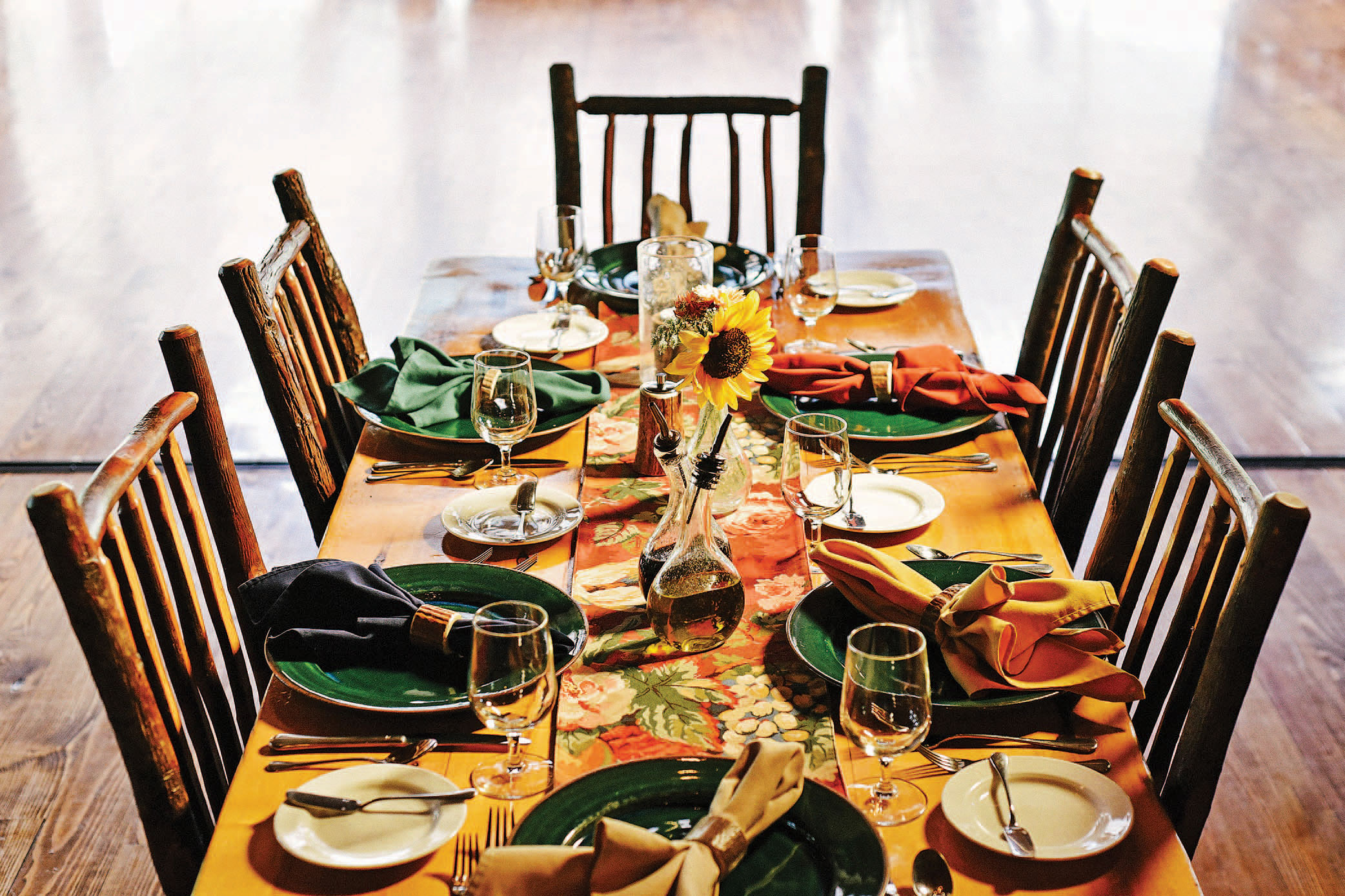
C&I: Given your affinity for mint, would you say you have a must-have ingredient — something that you keep going back to or jump at the chance to cook with?
Parrott: I don’t really have a favorite ingredient; or rather, my favorite ingredient is what we have at that moment. When the favas and peas and asparagus are ready, I’m obsessed with them, but when they’re done, I move on to beets and carrots. The cherries we get here are outstanding. Berries at their peak practically dissolve into juice in your mouth. And when we have 10 to 15 types of tomatoes to choose from, I’m in heaven.
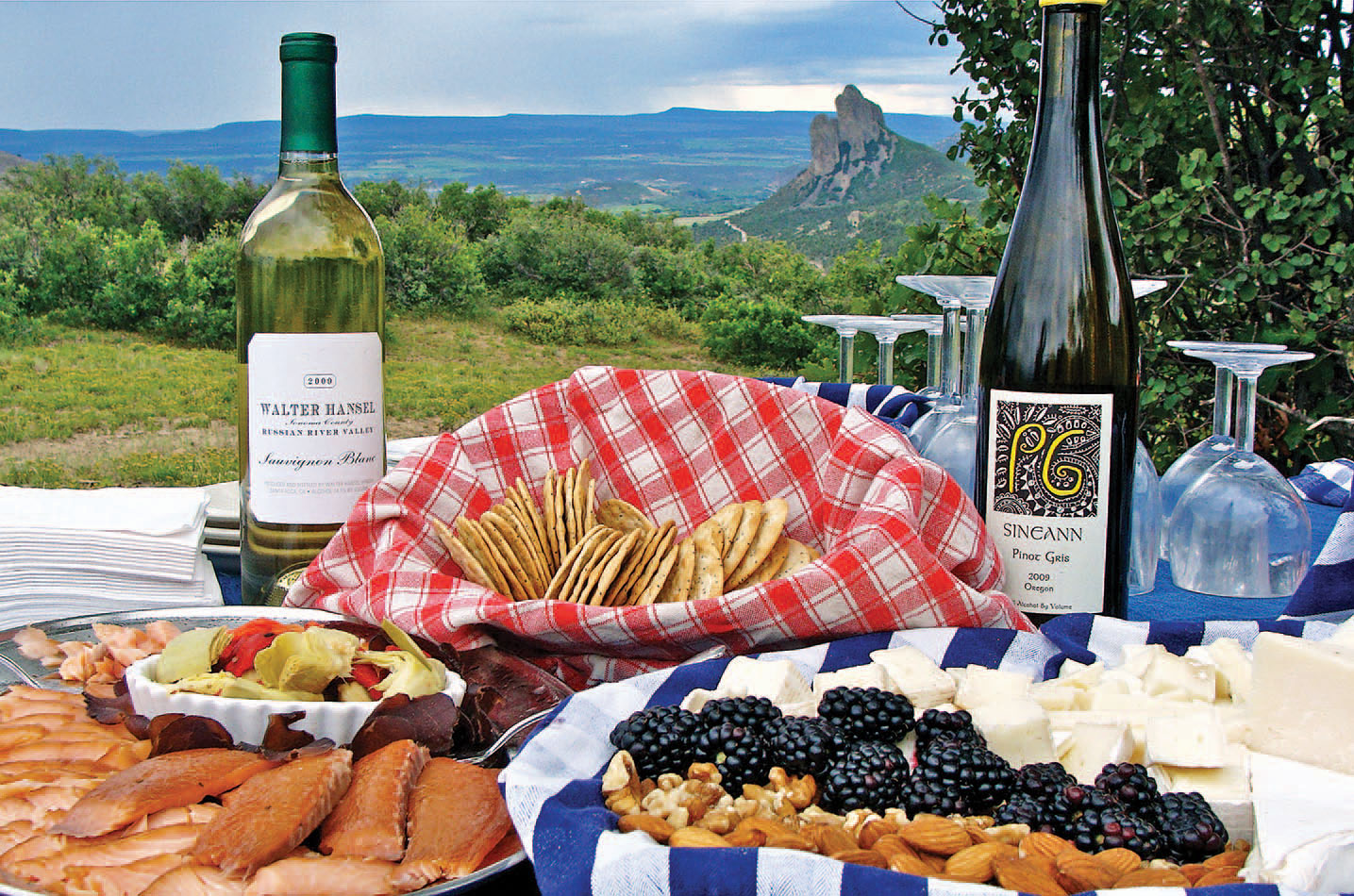
C&I: We can imagine how compelling and popular the culinary rides are — especially the Cocktail & Cookout ride. Can you tell us a little more about them?
Parrott: The cocktail ride and cookout is one of my favorite days, especially because it gets me outside. Guests ride to a scenic site, with a view of Needle Rock, where we set up a cocktail, wine, and beer bar, as well as hors d’oeuvres. (See the recipe for the Needle Rock Nectar cocktail.) After having a drink, mingling, and taking in the view, they mount up and ride down to the cookout site along the river. There we’ve set a rustic spread of smoked brisket and chicken, maybe smoked salmon, and occasionally a whole roasted lamb, along with a wide array of vegetables from the garden.
Guests also have the opportunity to ride out and forage for possible ingredients, especially wild mushrooms that grow in the area. Or get their hands dirty in the garden, harvesting, weeding, or any general maintenance. The kids especially enjoy working in the garden.
C&I: What do you think makes Smith Fork Ranch so special as a culinary ranch destination for yourself and for your guests?
Parrott: The rugged beauty of this spot, unspoiled and away from the crowds, down a dirt road and surrounded by mountains, will always be special. Each year we dedicate an autumn weekend for targeted culinary experiences. They include afternoon cooking classes with myself, wine tasting, the annual Harvest Dinner, and more. But professionally, it is the garden, the North Fork Valley, and surrounding areas that provide the building blocks for what I do. he farms and gardens, the ranches and orchards, the breweries and wineries provide me with the best in raw materials. It’s then my job — and my challenge — to let them shine.
Recipes
Braised Lamb Shank With Peas, Artichoke, Olive, and Pomegranate
For more information on Smith Fork Ranch or to make reservations, visit the resort’s website.
From the May/June 2017 issue.














